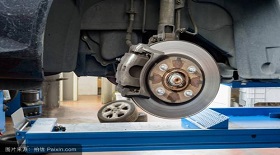Common problems, safety requirements and inspection of brake mechanical parts
Common problems in mechanical parts of brakes
The common problems of mechanical parts of elevator brake are as follows.
(1) The stroke indicator collides with the movable indicator, and the designers of some manufacturers are not considerate about the uniqueness of the stroke indicator installation.
(2) Long-term use of brake shoe caused by shedding, gluing open glue (some brakes are glued not riveted).
(3) Sealing rubber aging rupture falls into foreign bodies to cause brake blockage.
(4) The core of the electromagnet is rusty, which causes the brake blocking.
(5) The design of elevator iron-core guiding mechanism is unreasonable, and many breaks occur at the connection between copper rod and iron-core, resulting in brake block.
(6) The maintenance and maintenance personnel of the elevator are not suitable for the inspection and maintenance of the brakes.
Safety requirements and inspection of brake mechanical parts
In order to solve the above problems, the relevant national regulations and standards put forward the corresponding safety requirements and inspection standards, and the specific contents are as follows.
When the power supply of the elevator or the power supply of the control circuit loses power, the brake should produce enough braking torque to make the car stop reliably. Therefore, the braking torque is its main parameter, which is used to ensure that the running elevator in accordance with the standard deceleration stop.
TSG T7001-2009 Rules for Elevator Supervision, Inspection and Periodic Inspection - Traction and Forced Drive Elevators, Annex A, Item 8.10, requires: "the car should be up at normal operating speed without load, and the power supply of the motor and the brake should be cut off, and the car should be reliably stopped without obvious deformation and damage. "
When the car is up to the upper part of the stroke at normal operating speed, the main power switch is disconnected to check the car stop and deformation damage.
When the car is running at a lower station, the power supply of the motor and the brake is cut off. The car should be stopped reliably without obvious deformation and damage. It is usually tested with the addition and subtraction speed tester and recorded the value. The instrument can show the average deceleration.



